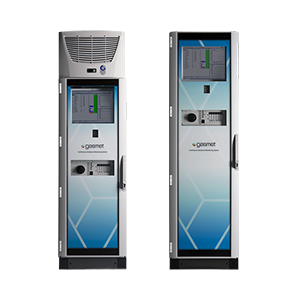Emission Limit Values for Aluminum Smelter
Typically, aluminum smelters have emission limit values (ELVs) for sulfur dioxide SO2 and hydrogen fluoride HF emissions. These emissions should be measured accurately, to ensure the smelter does not exceed its emission limit values.
Fluoride Compounds Have High Global Warming Potential (GWP) Values
In addition, several fluoride compounds may be produced during the aluminum production process. These compounds include carbon tetrafluoride CF4, hexafluoroethane C2F6, sulfur hexafluoride SF6, and silicon tetrafluoride SiF4. These additional emission components are problematic, as they have high Global Warming Potential (GWP) values.
GWP is a Relative Measure
The GWP is a relative measure designed to demonstrate how much heat a greenhouse gas (GHG) traps in the atmosphere. Emission of one kilogram of carbon tetrafluoride into the atmosphere has the potential of heating the atmosphere as much as 7,000 kilograms of carbon dioxide over the next 100 years.
Production of aluminum results in a large variety of gases that need to be measured.

Our Solutions: Continuous Monitoring System and Portable Gas Analyzer
Gasmet manufactures portable FTIR gas analyzers and stationary FTIR emissions monitoring systems for the aluminum industry. An FTIR analyzer works by simultaneously scanning the entire infrared spectrum. Our Calcmet software then calculates the concentrations of each gas in the sample based on the characteristic absorption. All the gases in the sample can be measured simultaneously because the entire infrared spectrum is scanned at once. This allows for very quick multicomponent measurements and for compensation for any cross-interference.
- The Continuous Emissions Monitoring System CEMS II e offers TÜV and MCERTS-certified solution (QAL1) for a wide range of demanding emission monitoring applications. The CEMS II e system utilizes Fourier Transform Infrared Spectroscopy FTIR technology.
- GT6000 Mobilis can be used when you need a portable gas analyzer solution instead of continuous gas monitoring. It is a portable FTIR gas analyzer for applications where multiple gas compounds need to be accurately monitored in hot & humid sample gas. Gasmet GT6000 Mobilis is the world’s smallest FTIR emissions monitoring system.
Why choose Gasmet as your emissions monitoring partner?
Gasmet is an ideal partner for the aluminum industry. Here are the top 5 reasons why you should choose us as your partner:
- Multicomponent capability – measure multiple gases simultaneously
- Adding new gases is easy – no need for hardware changes
- Our emission monitoring systems are available with performance approvals (TÜV, MCERTS)
- A portable FTIR analyzer allows you to take the lab to the site
- Simple and low-cost calibration – Gasmet’s analyzers do not need any span or re-calibrations, only zero calibration with nitrogen needed

Which Gasmet system best suits your emission monitoring needs?
CEMS II – Reliable emissions monitoring
We built CEMS II, so that emission monitoring would not need to keep you awake at night. That you would never need to wonder whether your emission monitoring equipment will meet the standards and requirements of tomorrow.
GT6000 Mobilis – Effortless stack testing
We built GT6000 Mobilis, so that for most of your stack testing gigs you would only need one compact analyzer to do the job. So that you could view results on your tablet in real-time, and wouldn’t need to stop by the lab on your way home.


